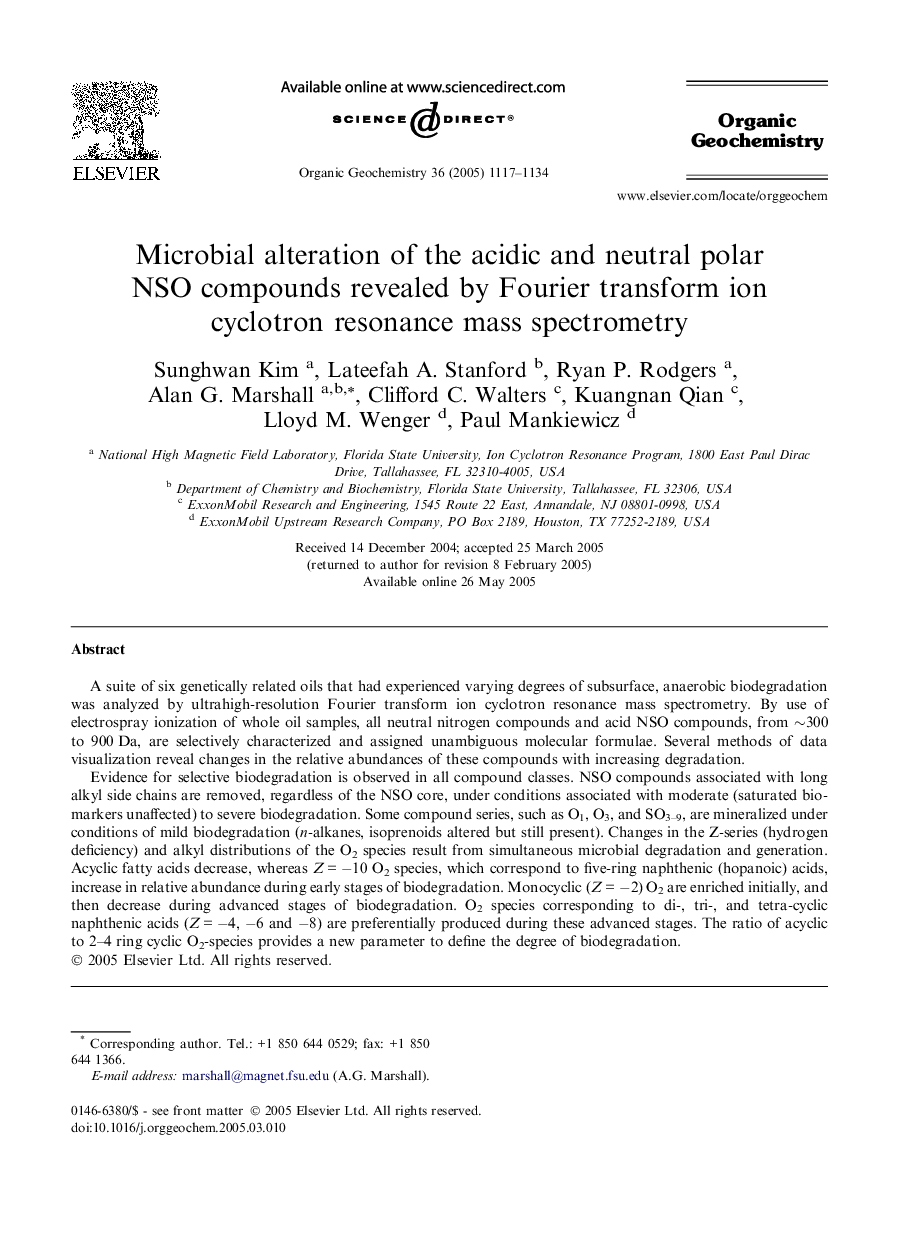| کد مقاله | کد نشریه | سال انتشار | مقاله انگلیسی | نسخه تمام متن |
|---|---|---|---|---|
| 9556467 | 1379778 | 2005 | 18 صفحه PDF | دانلود رایگان |
عنوان انگلیسی مقاله ISI
Microbial alteration of the acidic and neutral polar NSO compounds revealed by Fourier transform ion cyclotron resonance mass spectrometry
دانلود مقاله + سفارش ترجمه
دانلود مقاله ISI انگلیسی
رایگان برای ایرانیان
موضوعات مرتبط
مهندسی و علوم پایه
شیمی
شیمی آلی
پیش نمایش صفحه اول مقاله

چکیده انگلیسی
Evidence for selective biodegradation is observed in all compound classes. NSO compounds associated with long alkyl side chains are removed, regardless of the NSO core, under conditions associated with moderate (saturated biomarkers unaffected) to severe biodegradation. Some compound series, such as O1, O3, and SO3-9, are mineralized under conditions of mild biodegradation (n-alkanes, isoprenoids altered but still present). Changes in the Z-series (hydrogen deficiency) and alkyl distributions of the O2 species result from simultaneous microbial degradation and generation. Acyclic fatty acids decrease, whereas ZÂ =Â â10 O2 species, which correspond to five-ring naphthenic (hopanoic) acids, increase in relative abundance during early stages of biodegradation. Monocyclic (ZÂ =Â â2) O2 are enriched initially, and then decrease during advanced stages of biodegradation. O2 species corresponding to di-, tri-, and tetra-cyclic naphthenic acids (ZÂ =Â â4, â6 and â8) are preferentially produced during these advanced stages. The ratio of acyclic to 2-4 ring cyclic O2-species provides a new parameter to define the degree of biodegradation.
ناشر
Database: Elsevier - ScienceDirect (ساینس دایرکت)
Journal: Organic Geochemistry - Volume 36, Issue 8, August 2005, Pages 1117-1134
Journal: Organic Geochemistry - Volume 36, Issue 8, August 2005, Pages 1117-1134
نویسندگان
Sunghwan Kim, Lateefah A. Stanford, Ryan P. Rodgers, Alan G. Marshall, Clifford C. Walters, Kuangnan Qian, Lloyd M. Wenger, Paul Mankiewicz,